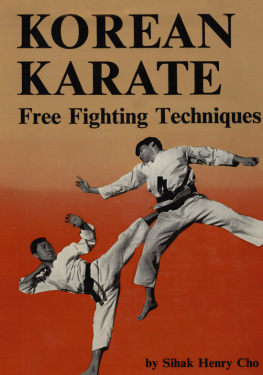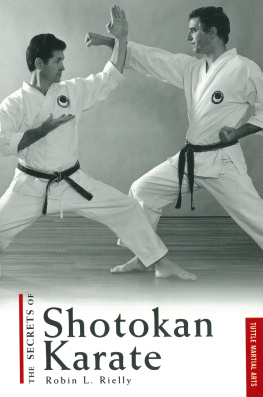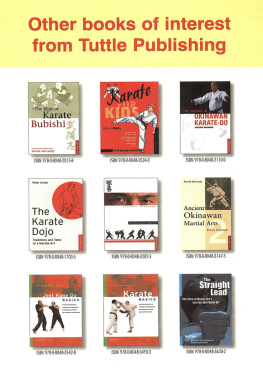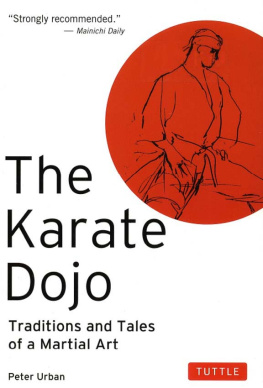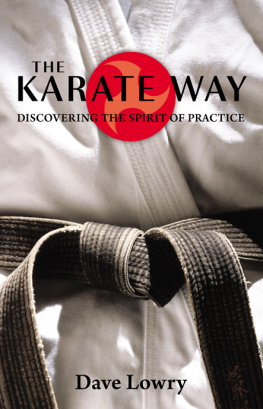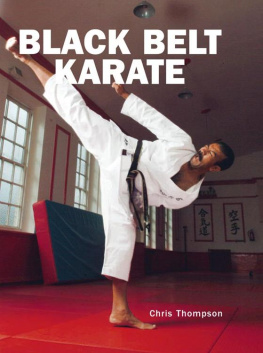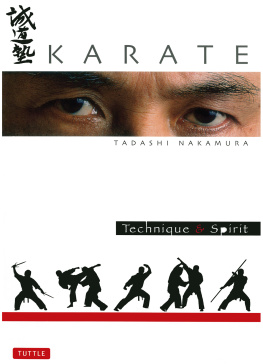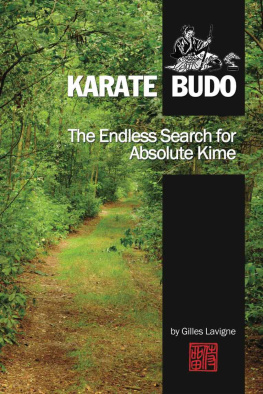
Acknowledgements
I would like to thank Nita Martin, without whom this book would never have happened. I would also like to thank the following people: Peter Terry and Denzil Fernandes at The Leys School for their help in arranging a venue for the photoshoot; Hiro Omori for supplying the Japanese script; all those who helped in the photoshoot: Nita Martin, Nick Day, Chris Day, Tom Davidson, Tom Auld, Ben Middleton, Jonathon Burnip, and Andrew Kuc.
Bloomsbury USA
An imprint of Bloomsbury Publishing Plc
50 Bedford Square | 1385 Broadway |
London | New York |
WC1B 3DP | NY 10018 |
UK | USA |
www.bloomsbury.com
This electronic edition published in 2016 by Bloomsbury Publishing Plc
Bloomsbury is a registered trademark of Bloomsbury Publishing Plc
First published 2007
Ashley P Martin, 2015, 2007
Inside photography Grant Pritchard
Cover photography Getty Images
Japanese script symbols Hiro Omori
Ashley P Martin has asserted his right under the Copyright, Designs, and Patents Act, 1988, to be identified as Author of this work.
All rights reserved
You may not copy, distribute, transmit, reproduce or otherwise make available this publication (or any part of it) in any form, or by any means (including without limitation electronic, digital, optical, mechanical, photocopying, printing, recording or otherwise), without the prior written permission of the publisher. Any person who does any unauthorised act in relation to this publication may be liable to criminal prosecution and civil claims for damages.
No responsibility for loss caused to any individual or organization acting on or refraining from action as a result of the material in this publication can be accepted by Bloomsbury or the author.
British Library Cataloging-in-Publication Data
A catalogue record for this book is available from the British Library.
Library of Congress Cataloguing-in-Publication data has been applied for.
ISBN: 978-1-63286-342-3 (PB)
ISBN: 978-1-63286-343-0 (eBook)
To find out more about our authors and their books please visit www.bloomsbury.com where you will find extracts, author interviews and details of forthcoming events, and to be the first to hear about latest releases and special offers, sign up for our newsletters.
CHAPTER ONE introduction
Karate is a Japanese martial art based on techniques developed in Okinawa and China that focuses on self-defense using punches, kicks, and blocks. Despite this emphasis, other techniques such as joint locks, throws, and leg sweeps are also included in the system. Karate is one of the few martial arts to contain such a wide range of techniques.
This book is aimed at the student of shotokan karate. There are many styles of karate, for example goju-ryu, wado-ryu, and shito-ryu, but ultimately each style of karate teaches the same principles, just with a different emphasis. A punch is still a punch; a kick is still a kick.
The Shotokan Karate Bible is intended to be a guide for the karate student, from beginner right through to expert, when you would be tested to receive the coveted black belt. Studying from a book is no substitute for a good teacher, but it can complement training with a qualified instructor.
What Does Karate Mean?

Karate, written in kanji
Written in kanji, Japanese pictographs, the word karate is composed of two characters. The first, pronounced kara, means empty and has Zen connotations. The second pictograph, pronounced te, means hand and so karate can be translated as empty hand.
The kara symbol is thought to have its origins in the Buddhist sunyata, the Sanskrit term for the ancient metaphysical concept of emptiness or nothingness. Gichin Funakoshi, the father of modern karate, wrote:
As a mirrors polished surface reflects whatever stands before it and a quiet valley carries even small sounds, so must the student of Karate-Do render their mind empty of selfishness and wickedness in an effort to react appropriately toward anything they might encounter. This is the meaning of the kara or empty of Karate-Do.
Funakoshi is saying that you need to empty your mind in order to take the most appropriate action. He is implying that the appropriate action is the righteous and moral thing to do. However, many take it to mean the correct action to take in order to succeed in a fight. If you clutter your mind, you cant think clearly. Thus, an empty mind is needed to practice good karate.
This, however, is not the original meaning of karate. The original pictograph for kara was quite different. In Japanese, it was a homonym: thats to say, it was pronounced in the same way, but it had a different meaning. It meant Tang, which was a Chinese imperial dynasty at the zenith of Chinese civilization that had a huge cultural influence on its neighbors. Tang was synonymous with China, and the original karate pictographs meant Chinese hand. In Okinawa, the same two pictographs were pronounced tode and many in Okinawa referred to them simply as te, meaning hand.

Original form of karate, written in kanji
This change from the old ideographs for karate to the new occurred at the beginning of the twentieth century. Japan was very nationalistic at this time, and, for many, the association of the old symbol with China was not acceptable. Some karate schools, particularly in Tokyo, began writing karate with hiragana, Japanese phonetic characters, as a way of avoiding the inappropriate kanji with its Chinese connotation. Others had started writing empty hand using the new symbol for kara. At a meeting of Okinawan karate masters in 1936, the new way of writing karate was officially accepted.
History of Karate
Much of the history of karate is shrouded in mystery. This is sometimes explained as being a consequence of the fact that, before the twentieth century, martial arts were often practiced in secret societies. But a more significant factor seems to be the impact of the Typhoon of Steel, the invasion of Okinawa in 1945 by American forces that completely flattened the cities of Naha and Shuri, destroying any written records of karates early development.
An examination of the available details suggests a fascinating origin for karate in Okinawa: a crack team of royal bodyguards, a kind of nineteenth-century secret service, working as bureaucrats and palace officials by day and developing and practicing a deadly unarmed fighting style by night.
CHINESE WAY OF THE FIST
Many accounts of the origin of karate trace its roots back to ancient China with the introduction of martial exercises into the Shaolin temple by a Buddhist monk called Bodhidharma in the sixth century. He traveled from India to the Shaolin temple in China and found the resident monks to be in a feeble condition. Bodhidharma instructed the monks in the courtyard and began to teach them the art of Shih Pa Lohan Sho (the 18 hands of Lohan), so that the monks could attain spiritual enlightenment while preserving their physical health.
This story may be more myth than history, but the Shaolin temple was certainly one source of the class of Chinese martial arts known as chuan fa, the way of the fist. Chinese chuan fa was certainly a major influence on the martial art that we today call karate. But few of the Chinese traditions have been continued by karate practitioners and so, to find the real birthplace of karate, we need to look at a small island in the East China Sea called Okinawa.


